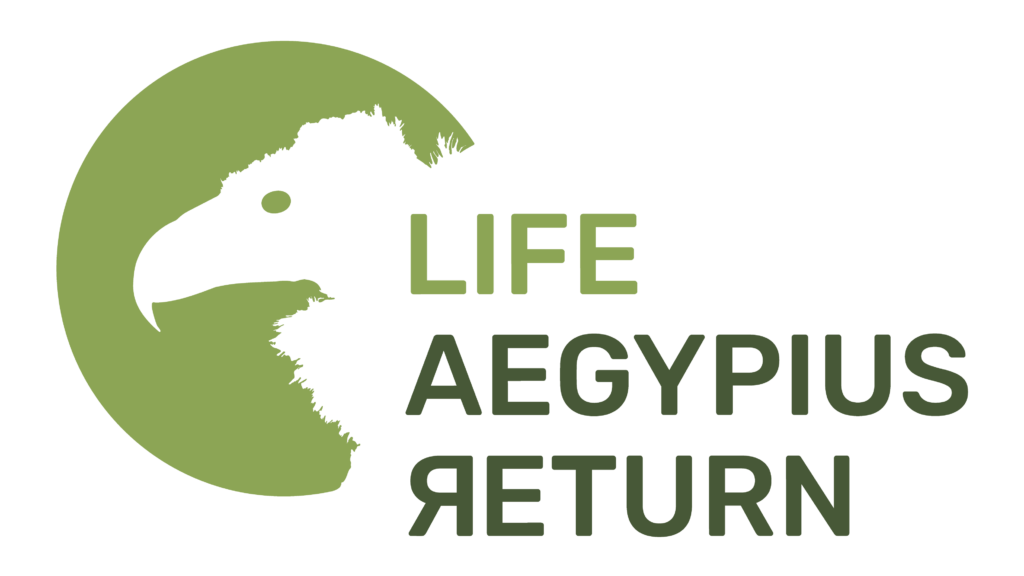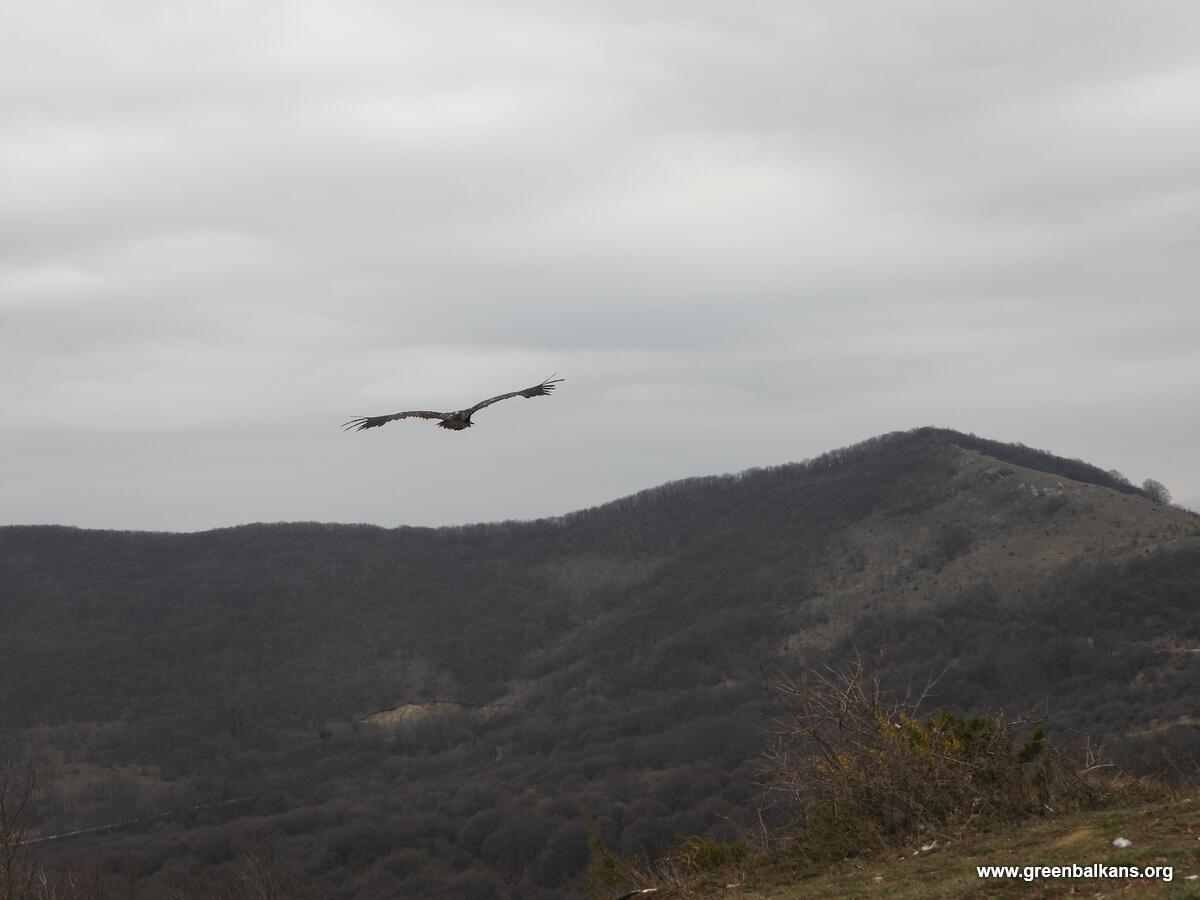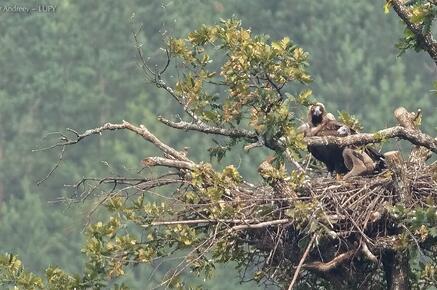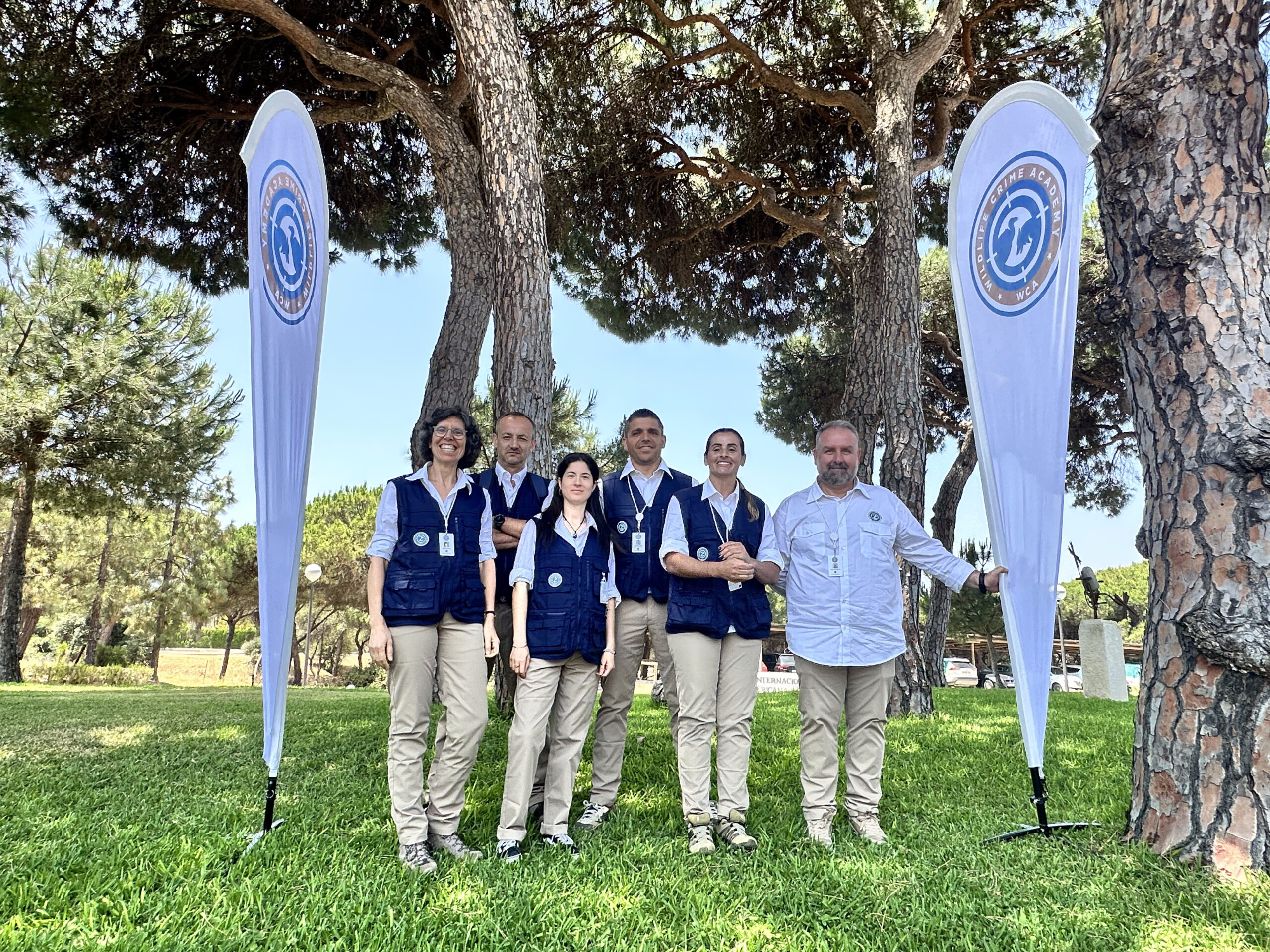Cinereous Vulture Aquis was still too young to fly when the LIFE Aegypius Return team brought it down from the nest to tag him and check his health condition. A strange lump was visible over the bird’s eye. Concerned about its cause and potential consequences, the team transferred Aquis to a wildlife rescue centre instead of returning the chick to the nest. After surgery and rehabilitation, Aquis was finally released this Tuesday in Tejo International Nature Park, Portugal. In the wild, for the first time as a flying juvenile, it has been exploring the southern area of the nature park.


Cinereous Vulture Aquis hatched in the Tejo International Nature Park.
During this breeding season, the LIFE Aegypius Return monitoring teams, with the support of ICNF, Quercus and Rewilding Portugal, have attentively followed the pairs and their chicks’ development in the four Cinereous Vulture colonies. The male Aquis hatched in the Tejo International Nature Park, in a place called Águas de Verão (Castelo Branco, Central Portugal) from which he got his name: aquis means water (“Água”) in Latin.
From a safe distance, with the use of telescopes, our vulture experts can determine the right moment to tag the hatchlings in the nest. It is a complex calculation, as the chick should be big enough to hold the GPS transmitter but still unable to fly to prevent it from falling off the nest. In July, the team concluded that Cinereous Vulture Aquis was ready to be tagged and prepared the operation to bring it down from the nest.
A strange lump on Cinereous Vulture Aquis
The tagging operation involves skilled technicians, from experienced climbers to veterinarians and conservation biologists. A health check-up is performed, and biological samples are collected, which allows us to find out the hatchlings’ sex and collect their genetic information, among other valuable information.
This year, 15 Cinereous Vulture hatchlings were tagged and returned to the nest, but that was not true for Aquis. When the bird was brought down from the nest, the monitoring team was surprised to find a large lump over its eye. Unable to determine the cause of the protuberance, the team transported it to CERAS – Centro de Estudos e Recuperação de Animais Selvagens, a wildlife rescue centre managed by Quercus Association, instead of returning the chick to the nest.

Rehabilitation at CERAS Wildlife Rescue Centre
As Aquis arrived at CERAS, it was submitted to surgery by the veterinary team. With the biological samples collected, a histopathology laboratory analysis (related to diseases in tissues) was run and tested for avian pox.
Aquis was lucky. The results indicated an extensive inflammatory process associated with bacterial colonies, but no viral infection was found. Although no inclusion bodies were retrieved during the surgery, the lump was probably a response to the penetration of a foreign body, with bacterial contamination.

Back in the wild: Aquis is free again
To ensure the bird fully recovered before returning to the wild, Aquis was kept in captivity with minimum human contact to avoid imprinting it. Some weeks after the surgery, the inflammation was healed, but the team at CERAS decided to wait until the bird could fly independently.
On 19 September 2023, Cinereous Vulture Aquis was released in the Tejo International Nature Park in a closed event with the participation of SPEA (the partner responsible for monitoring the Tejo’s colony within LIFE Aegypius Return), Instituto da Conservação da Natureza e das Florestas (ICNF) and Quercus. Ahead of the release, Aquis was fitted with a GPS transmitter, which enables us to follow its movement on its adventures across the Iberian Peninsula. So far, it has been exploring the surrounding area, always keeping a short distance from the vulture feeder at Monte Barata.

The importance of monitoring Cinereous Vulture colonies
This story has a happy ending thanks to the committed team and interdisciplinary approach of the LIFE Aegypius Return project. The monitoring teams have been in the field since early February, looking for new pairs and confirming breeding success in Portugal’s four Cinereous Vulture colonies.
Monitoring and tagging chicks in the nest provides an opportunity to check their health condition and act swiftly in case they need to be rescued or rehabilitated, just as it happened with Aquis. These interventions help us increase breeding success and nestling survival. In addition, thanks to the data collected, we are able to analyse population dynamics, map their expansion and foresee potential areas where nesting and habitat conditions can be improved. Soon, we will reveal an updated estimation of the breeding success in Portugal this season, stay tuned.
Strengthening the Critically Endangered Cinereous Vulture Population in Portugal
The LIFE Aegypius Return project aims to consolidate and accelerate the return of the Cinereous Vulture in Portugal and western Spain by improving habitat and food availability and minimising the main threats with capacity-building actions for national entities and agents. A joint effort by the project’s nine partner organisations, collaborating with several key entities to implement specific conservation actions in ten Natura 2000 areas along almost the entire border between Portugal and Spain. The project aims to double the population of Cinereous Vultures in Portugal to 80 pairs in 5 colonies and thus lower the national conservation status of the species from “Critically Endangered” to “Endangered” by 2027.

About the LIFE Aegypius Return
The LIFE Aegypius Return is a 3.7 million project, co-financed by the European Union’s LIFE Programme, whose success relies on the involvement of all relevant stakeholders and the extensive collaboration of the leading project partner, the Vulture Conservation Foundation (VCF), with all local partners: Palombar – Conservação da Natureza e do Património Rural, Herdade da Contenda, Sociedade Portuguesa para o Estudo das Aves (SPEA), Liga para a Protecção da Natureza (LPN), Associação Transumância e Natureza (ATN), Fundación Naturaleza y Hombre (FNHY), Guarda Nacional Republicana (GNR) and Associação Nacional de Proprietários Rurais Gestão Cinegética e Biodiversidade (APNC).




